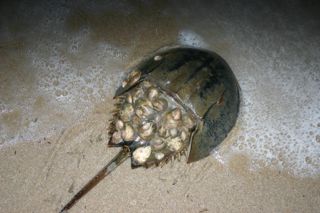Science beyond the classroom
By Mary Bigelow
Posted on 2014-06-11
 Among the misconceptions that students may have is their perception of the “mad scientist” — a solitary person in a white coat who works in a laboratory with odd smells and beeping noises. So when teachers refer to students as scientists, they may be a little wary of the label. Students might not realize that science is a collaborative process, that science investigations can occur just about anywhere, and that they themselves can contribute to our knowledge of the world.
Among the misconceptions that students may have is their perception of the “mad scientist” — a solitary person in a white coat who works in a laboratory with odd smells and beeping noises. So when teachers refer to students as scientists, they may be a little wary of the label. Students might not realize that science is a collaborative process, that science investigations can occur just about anywhere, and that they themselves can contribute to our knowledge of the world.
Students need opportunities to apply what they are learning to new situations and to experience what scientists actually do. But it’s a challenge for teachers to design and conduct authentic activities with real-life applications. Fortunately, many institutions and organizations have set up citizen-science or collaborative research projects in which students and teachers can participate. It’s a win-win scenario—the sponsor gets additional observers and data-collectors on the task, and the students get experiences that can extend into careers or lifelong learning.
If you’re looking for opportunities for your students to collaborate with scientists and other observers on cutting-edge research projects and informal science activities, take a look at SciStarter. This is a searchable collection of community-based and citizen-science projects–regional, national, and international. There are projects appropriate for all grade levels and on a variety of topics. Some are ongoing, others are seasonal, and some are once-and-done projects. The latest SciStarter newsletter describes some ocean-themed projects such as sharing photographs of seahorses or horseshoe crabs, analyzing video images of deep sea life, or collecting data on phytoplankton with a Secchi disk and a smartphone app. Follow SciStarter on Faceboook or Twitter for the latest projects.
I just learned of another online collaboration from the Royal Society of Chemistry (UK) — The Global Experiment 2014: The Art of Crystallization. In this project, students are invited to grow their own crystals, analyze the results, and post their local data, including photographs. This is based on the theme of identifying the best conditions for growing the biggest crystals. The project runs through the 2014-15 school year. (Did you know that 2104 is the “International Year of Crystallography”?) The introductory page has a video describing the project, a link to download the instructions, and the interface to upload and view data
For more on citizen science projects see
- NSTA’s The Science Teacher (December 2012)
- The NSTA blog Engage Kids in Citizen Science with a link to the NSTA publication Citizen Science: 15 Lessons that Bring Biology to Life 6-12
- The Citizen Science thread in the NSTA Informal Science discussion forum
- The Citizen Science Alliance
- The Real World collection of resources on NSTA’s Learning Center, showcasing how students and teachers can engage in “real world” projects that go beyond the classroom walls.
And use the NSTA journal and SciLinks for supporting information and ideas on whatever topic you choose to investigate.
Photo: MLB
Disclaimer: The views expressed in this blog post are those of the author(s) and do not necessarily reflect the official position of the National Science Teaching Association (NSTA).


